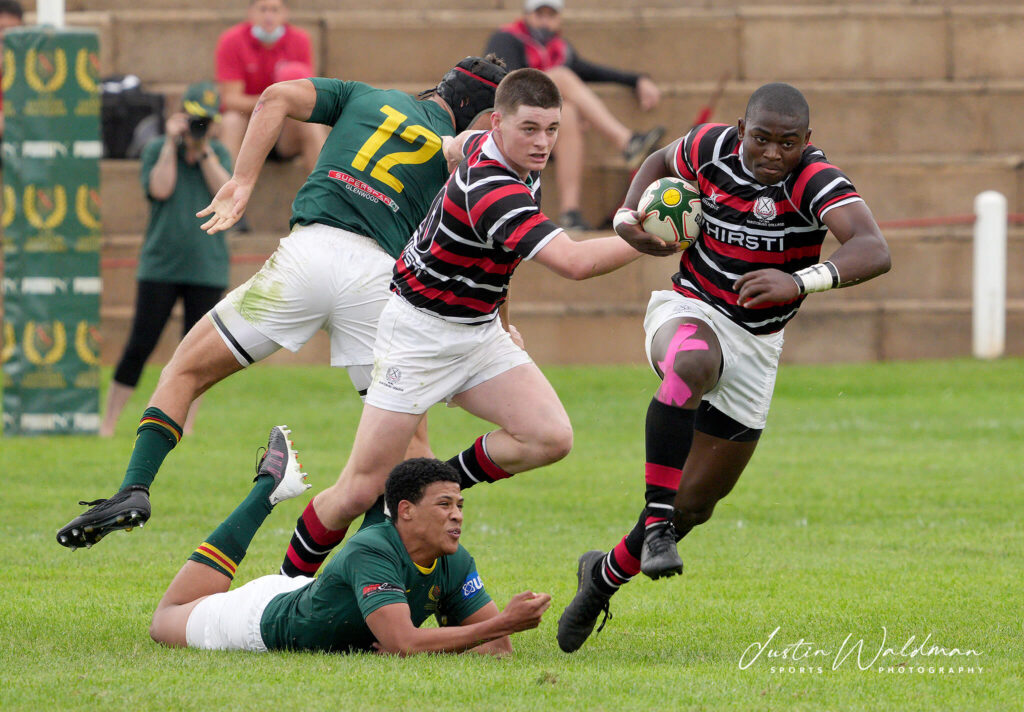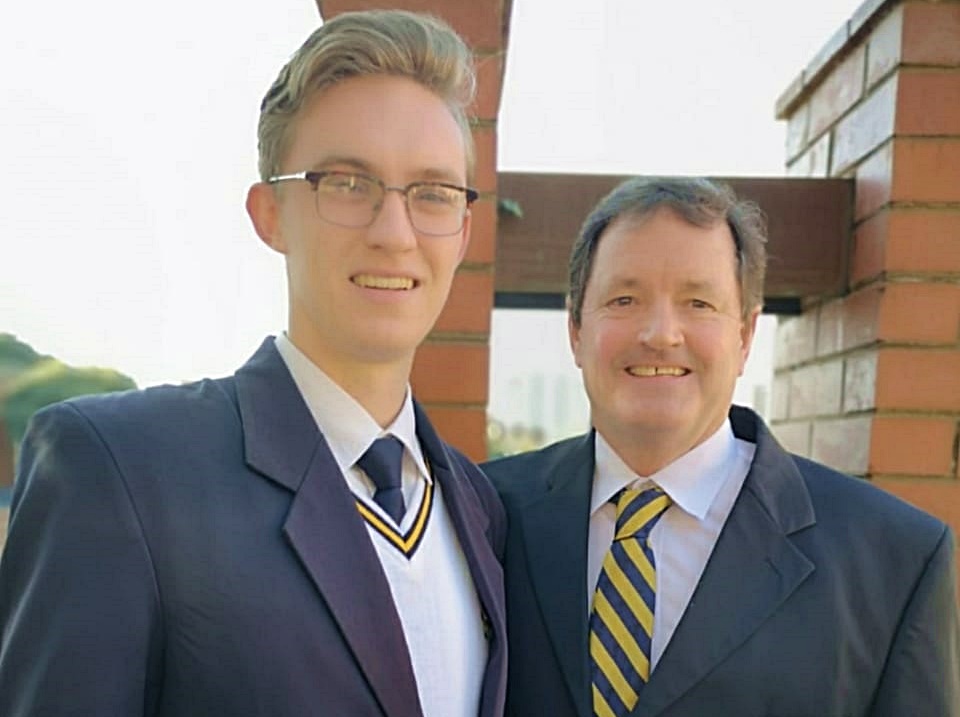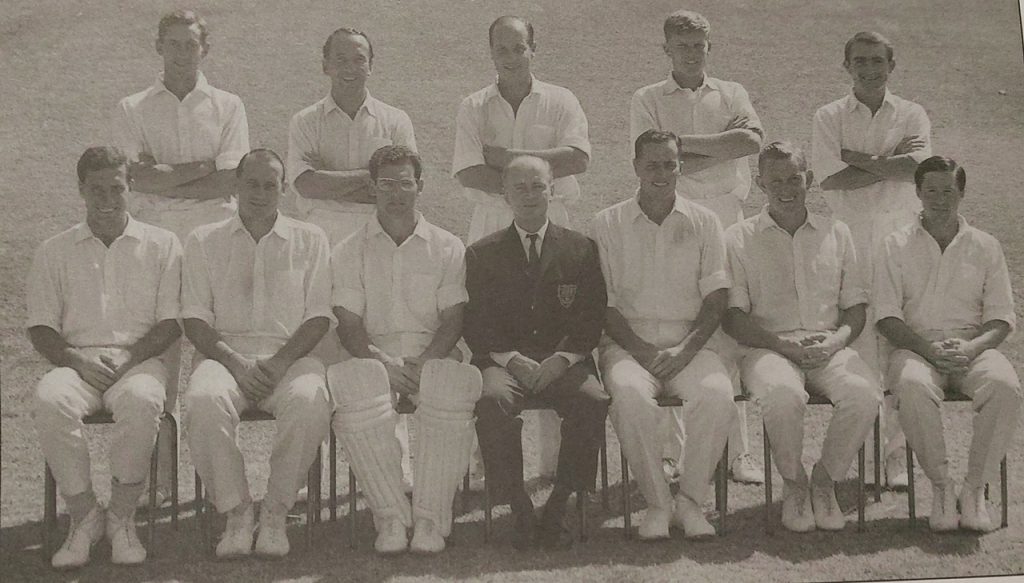Posts Tagged ‘durban’
Maritzburg College 1st XV beat Glenwood for first time in 11 years
It was a moment to savour for the Maritzburg College first XV when they overcame an 11-year hoodoo to beat the Glenwood first XV 20-12 on Dixons in Durban on Saturday.
Red Black & White head coach Cameron Fraser said that the College boys under the captaincy of flanker Corbin Thunder were determined to break the first XV win drought against Glenwood.
Justin Waldman Photography feature pic caption: The powerful Maritzburg College first XV left winger Siphozola Radu finds some space with flyhalf and head boy James Beauclerk in support.
Coach Cameron said of the 3-tries-to-2 victory that turning the 11-year tide of losses in this decades-old contest between two proud rugby schools required a brave performance from the lads in Red Black & White.
And they duly delivered, did captain Thunder’s young men.
“College managed to win the physical battle upfront and avoided ill-discipline as best as they could,” said the coach.
The men from PMB gained the early ascendancy when right wing Kuhann van den Berg chased after a telling attacking kick from scrumhalf AJ Knoetze and managed to offload the ball to inside centre Liam Prinsloo, who raced over in the corner for the opening points of the game (5-0).
Coach Cameron said the match was of an exceptionally physical nature and the number of penalties conceded was a by-product. College’s lively number 9 AJ Knoetze slotted a penalty goal towards the end of the first half to leave the visitors with a handy 8-0 lead going into the changeover.
“Glenwood struck back early in the second half after some powerful surges from their forwards,” said the College coach.
“Glenwood caught College unawares at the breakdown to eventually crash over the line on the blindside.”
Now within just 3 points of College (8-5) Glenwood then leaked a penalty and Thunder’s men conjured up a very destructive maul to bring the Red Black & White within striking distance of touchdown.
And after a number of pick-and-go’s there was no stopping the inspirational Red Black & White captain and flanker Corbin Thunder, as he breached the try-line whitewash despite the attention of a posse of Glenwood players on his back.
Scrumhalf AJ Knoetze converted captain Thunder’s try and with the scoreboard reading 15-5 College had regained a bit of breathing space.
Going into the last quarter of the game, alert Maritzburg College hooker Quentin Pitout contrived to pinch an overthrow off a Glenwood lineout and then demonstrated his mobility and rugby intelligence to swerve inside and outside the approaching Glenwood cover defenders before offloading to his left winger team-mate Sipho Radu who dived over in the corner.
With College now in a comfortable 20-5 lead and 10 minutes left on the clock, the never-say-die Glenwood lads hit back with a converted intercept try under the posts (20-12).
The gutsy Glenwood men were on the attack as the match drew towards its close but it was a superb Willian Pretorius turnover at the breakdown that saw the Red Black &White number 8 deny the Green Machine and put the College victory beyond doubt.

A memorable moment captured by the educated lens of Justin Waldman Photography as Team College enjoy the satisfaction of a hard-earned victory over the Glenwood first XV on Dixons in Durban on Saturday, 4 September 2021.
“It was a special performance by the College 1st XV who will be highly motivated to repeat this result in the return fixture on Goldstones this coming Saturday [11 September 2021],” Red Black and White coach Cameron Fraser concluded.
It certainly looks to be an absolute belter of a match in store between these two age-old rivals on what we hope will be a balmy Goldstones spring afternoon.
MARITZBURG COLLEGE FIRST XV vs GLENWOOD
1. Mawande Mdanda
2. Quintin Pitout
3. Roydon Swift
4. Joshua Kähler
5. Christian Williamson
6. Corbin Thunder (capt)
7. Wela Takata
8. Willian Pretorius
9. AJ Knoetze
10. James Beauclerk
11. Siphozola Radu
12. Liam Prinsloo
13. Lusanda Mtshali
14. Kuhann van den Berg
15. Spha Ngcobo
Top waterpolo player, top cricket coach, and now CEO of the DHS Foundation
15 June 2020 – Andrew Shedlock, as the CEO of the DHS Foundation, is a well-known figure at Durban High School and in the school’s community. Before taking up his position in 2019, he enjoyed a successful career as an international waterpolo player before turning to cricket and making his mark as a coach on professional and schools’ level players alike.
As a young boy at DPHS, he excelled as a swimmer and represented Natal Schools in the pool in 1973 and 1974. He also had aspirations of success on the cricket field.
When it came time for high school, he moved to DHS where he continued swimming and playing cricket, which was a challenge at times. In a recent interview, he said: “In those days the swimming galas used to take place on a Saturday morning, so I, on the odd occasion, would go to a gala and swim (I was the number one swimmer in my age group), and from the gala I used to go to cricket matches. That happened in second form (grade 8) and third form (grade 9). In third form, I swam for Natal Schools.”

The following year, he was appointed captain of the DHS under-15 A cricket team, but then something occurred that was to have a huge impact on his life. He went to watch his brother playing a waterpolo match and when his brother’s team found themselves short of a player they asked Andrew to play. He did.
“Being swimming fit, it was fine. I jumped in the pool and I enjoyed the game and I said ‘this is me’. I had one or two cricket games left and I said ‘at the end of this I am giving up cricket’. I went and finished my cricket games.”
As the return of summer sports approached after winter, he started swimming again and told the waterpolo coach he wanted to play waterpolo. He was then selected for a Stayers tour of the Eastern Cape.
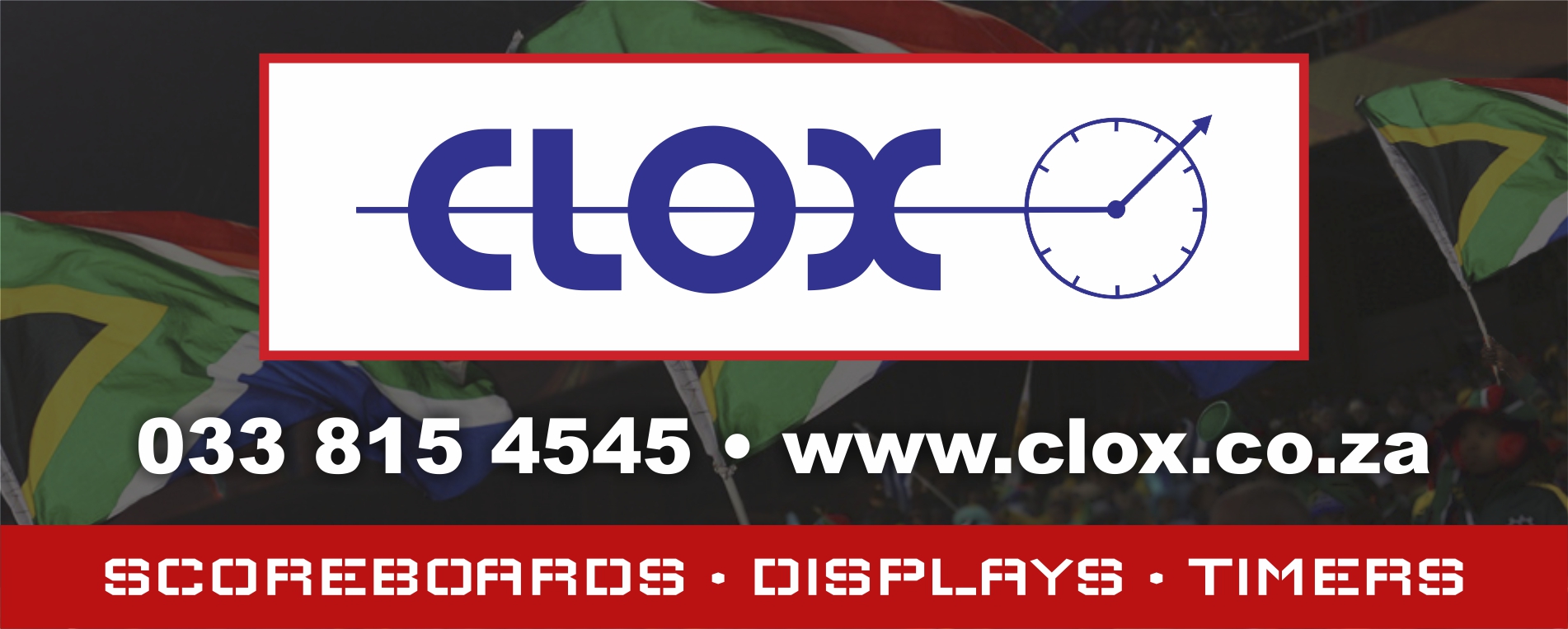
When the match is tight and every run counts, you can count of Clox Scoreboards of KZN. http://clox.co.za/
“Now, everything was flying and I was training and I understood that I was giving up cricket. The last week prior to the tour I was called into the Headmaster’s office, who was then the legendary Des ‘Spike’ Thompson.
“He turned around to me – and every time I go into that office now I have these visions of standing there in front of him – and from where I stood you could see the whole school from the windows, and he said to me ‘Shedlock, you are not allowed to give up cricket. The major sports at this school are cricket and rugby. They take preference and I am not allowing you to play waterpolo. I want you to go from office to the cricket practice (because I was captaining the under-15 A team at the time) and that is it! Don’t ask questions.
“I said, ‘but sir, I don’t have my cricket kit with me’. He said, ‘that’s fine. You go to waterpolo today. But when you come back in the fourth term, I expect you to play cricket’. I went from there to the waterpolo practice and went on the waterpolo tour. Then, when I came back in the fourth term, I said to the waterpolo coach, Mr Nico Lamprecht, ‘What must I do?’ and he told me to go to waterpolo.
“I played first team in the fourth form, which in those days was unheard of. I was still under-15. I went on and played SA Schools in 1980 and I captained SA Schools in 1981. I never looked back.

Andrew captained the South African Schools waterpolo team of 1981.
“One day I asked Nico what happened with my situation at DHS. He said he went to the Headmaster after the tour and said to him, ‘Mr Thompson, what takes preference, first team waterpolo or under-15 A cricket?’, so Spike told him it was obviously first team waterpolo. Nico said ‘Shedlock’s in the first team’. That’s how he got around me being able to give up cricket.
“Funnily enough, I became the reference, not only for DHS, but also for other schools. When guys wanted to give up, they would point to Shedlock at DHS, who was able to do it. People after that used me as an example.”

Andrew Shedlock and Steve la Marque proudly display their SA Schools’ colours.
After school, Andrew went to Stellenbosch University. As part of his degree, he did a level two cricket coaching course. Later, when he returned to Durban, he did a level three course.
During his time at Stellenbosch, in 1986, he also represented the South African men’s waterpolo team. In 1989, he completed his studies, having qualified as a biokineticists. He needed to do an internship and, fortuitously, the man he did it under was Richard Turnbull. Turnbull had earned himself a highly respected reputation and, as a result of that, was involved with both the Natal cricket and rugby teams.

While at university, Andrew was selected for the South African men’s waterpolo team in 1986.
Andrew, who was living in Durban, drove up to Pietermaritzburg every day to work with Turnbull, who, besides running a successful gym, Body Dynamics, where a number of other biokineticists were doing their internships, also worked in the Sports Office at the local university. Future international cricket coach Graham Ford worked there too. When Turnbull decided to set up a Body Dynamics Gym in Durban at Collegians Club, he chose Andrew to run it.
Back in Durban, cricket again entered Andrew’s life. “I got involved with the Natal cricket side. In those days, Mike Procter was the coach. Kim Hughes was the captain. There were guys like Peter Rawson, Neville Daniels, and Rob Bentley. I became friendly with Kim, and the Aussies were probably a bit more advanced than us in those days [in how they utilised sports science]. Fitness was quite a thing for him, so he used to come into the gym quite often and encouraged all the other guys to come.

When it comes to planning your next school sports tour look no further than former Hilton College first XI captain Craig Goodenough who’s been there, seen the movie and bought the T-shirt factory.
“In 1990, Richard [Turnbull] worked closely with Ian MacIntosh and the Natal rugby side (which was, of course, the first year that Natal won the Currie Cup). Because Richard couldn’t come to Durban that often, I used to deal with a lot of the rehabilitation of the players. That year I rehabbed Dick Muir when he injured a hamstring, Jeremy Thomson popped a shoulder, and Wahl Bartmann was another player I worked with. I did the rehab for a lot of those Natal players. Biokinetics in those days wasn’t a recognised profession. It was really, really tough.
At that time, too, Andrew was still playing top level waterpolo. In fact, the next South African national team to tour internationally after the ground-breaking cricket tour of India in 1992 was the waterpolo side and it was not a gentle introduction.
“We went to a pre-Olympic waterpolo tournament in 1992 in Hungary and played against Hungary, the USA, the Netherlands, Czechoslovakia and Italy [who would go on to claim Olympic gold],” Andrew recalled. “We played against all the teams that were two months out from the Olympic Games, so they were peaking and those were their Olympic sides.”

Six members of the Natal waterpolo team of 1992 were selected for the national team, including Andrew Shedlock.
By then, Andrew had also moved to the Health and Racquet Club in La Lucia. Then, Graham Ford took over from Mike Procter as Natal cricket coach.
“Because of his association with Richard at Maritzburg University, Graham wanted Richard to work with him,” Andrew said. “But Richard couldn’t because, being in Maritzburg, he couldn’t get down to Durban all the time. So I went and helped. I used to go to practices and warm-ups for games.
“On Saturdays and Sundays, during a four-day game in Durban, I would be there and act as a fitness assistant. There were players like the legendary Malcolm Marshall, Clive Rice, Peter Rawson, and then our local talent which included Andrew Hudson, Jonty Rhodes, Lance Klusener, Shaun Pollock, Errol Stewart, Neil Johnson, Dale Benkenstein, Mark Bruyns and Doug Watson.

Check out the Cell C personal and business contracts at https://www.cellc.co.za/cellc/contracts
Being around the players so much proved to be a valuable learning experience. “In those days, you spoke cricket. Can you imagine sitting next to Marshall, Rawson, and Rice? Sometimes we would leave the ground at 19:00 or 20:00, having listened to these guys’ stories until it was late.”
After some time, Graham Ford asked Andrew if he would be interested in working as a full-time trainer out of the Natal Cricket Union’s indoor centre. He said a gym would be added on the side. Andrew agreed to it and turned his sole focus to cricket.
It was an interesting time. Under the leadership of Malcolm Marshall, the approach of the Natal team was changing. Some players, like Marshall, were full-time professionals, while others, like Peter Rawson, Mark Logan and Errol Stewart, held down jobs, which meant different practices times for different players. In addition, a number of Natal players had to travel from the Pietermaritzburg daily to attend practices. There was a period of adjustment needed.

The Dolphins celebrate winning the Standard Bank One Day Cup in 1996/97.
It also became a valuable learning environment for Andrew. He said: “Fordie would go and throw and he would, for example, say Jonty was coming in for a net and I would throw to him. I had quite a strong arm from playing waterpolo and I got the nickname ‘Wayward Wally’. Every time Fordie would coach I watched and listened. It got to the stage where guys would ask me to throw to them when Fordie was busy. I got to teach myself about the game.
“I had guys in those days, like Jonty and Andrew Hudson, while Lance [Klusener] and Polly were coming through. Often when I threw to them, those guys knew their games, so they taught me what to look for. I learned and developed.”
In 1998, Graham Ford joined the Proteas as an assistant coach to Bob Woolmer. When he did that, he asked Andrew to take over the Cricket Academy at Kingsmead. Andrew subsequently took charge there and started coaching the under-19 team, while staying involved with the senior side. During that period he also built up a particularly strong relationship with another former DHS boy, Lance Klusener, and Jonty Rhodes.

Andrew hanging out with Lance Klusener. He built up a particularly close relationship with the DHS Old Boy during his time with Natal cricket.
“They would have no one else coach them, no one else throw to them other than me,” Andrew said. “I spent a lot of time with Lance prior to the 1999 Cricket World Cup, and also with Jonty.”
Klusener, of course, went on to be named Player of the Tournament at the Cricket World Cup after a string of devastating match-winning performances. The South African challenge, sadly, ended in the semi-finals when, after playing to a thrilling tie against Australia, they were eliminated from the tournament.
“Lance and Jonty taught me a lot,” Andrew said. “I would get a phone call from Lance from the West Indies, for example, and he would ask if I had watched him bat and how did he do. If I didn’t watch, he would shit all over me.

Take a 5-star break from life in the fast lane. Contact Fordoun CEO and former Michaelhouse rugby star Richard Bates for your well-earned break. https://www.fordoun.com/
“Through the course of time, people like [DHS old boy] Hashim Amla came through the system. [DHS old boy] Imraan Khan came through the system, and people like Mark Bruyns, Doug Watson, and [Zimbabwe international all-rounder] Neil Johnson. Natal was a formidable team. It was great to be involved with them.”
Change is inevitable, though, and one day, in 2003, it announced itself. “A letter got slipped under my door to say thank you very much, but your services are no longer required. I was a bit upset and I tried to fight it, but I was fighting a losing battle.”
Resetting, that same year, in March, he set up the Shedders Cricket Academy. It has been in operation ever since. Andrew explained: “I started at DPHS. From there I moved and coached from home. Then I ended up at Northwood for 10 years.” There he served the school as a professional coach, assisting all teams. He was subsequently appointed the Director of Cricket and also coached the 1st team.

Gareth Orr (right) was one of the first boys Andrew coached when he started his cricket academy in 2003. Gareth went to Maritzburg College, played for KZN Inland, and then went to study at the University of Pretoria. When he decided to start playing cricket again in 2020, he once more turned to Andrew for coaching.
After leaving Northwood, he moved to DHS. The Shedders Cricket Academy now operates out of DHS and, coming full circle, DPHS, where it all began.
Reflecting on his manner of work, his coaching style, and what he has to offer as a coach, Andrew said: “One advantage I’ve always felt I had was that I had played international sport and I knew the pressures of playing at that level.
“I feel a lot of my coaching is focused on motivation, encouragement, and positive reinforcement. Cricket is one of those sports where it is so technical that you can find a fault with every shot or ball. I try to avoid that and make it a lot more positive.”
Interestingly, his coaching has also impacted on some prominent England internationals. Craig Roy, had played provincial and international waterpolo with Andrew, so when Craig’s son, Jason, was starting to make his mark with Surrey he arranged for him to come out to South Africa to spend six weeks with Andrew to work on his game. It wasn’t the last time Jason, who went on to earn his England colours as a hard-hitting top order batsman, sought out his coaching.

Andrew has worked closely with England international Jason Roy, the son of his former waterpolo team-mate Craig Roy.
Kevin Pietersen, too, when he was in the wilderness in Natal cricket, before his move to England where he became a mainstay of the national side, turned to Andrew for coaching and that resulted in many hours spent at Kingsmead with the pair working on Kevin’s game.
Andrew also spent time coaching future England one-day international captain Eoin Morgan, and that led to one of the few regrets of his coaching career. He said: “I worked a little bit with Eoin when he came out and spent six months at Saint Henry’s as a schoolboy. It was at a time that [future Proteas’ assistant coach] Adrian Birrell was just finishing off as the Ireland coach and Ireland were trying to persuade Eoin Morgan to keep his Irish citizenship and play for them. I worked with him and I got offered a job at Malahide Cricket Club, which is now a test venue for Ireland cricket. You look back and wonder what if I had taken the job?”
Cricket, though, did take him abroad to the hot bed of India and it almost resulted in a position in the lucrative Indian Premier League (IPL). “I got quite involved in the Indian Cricket League (ICL), which was the one that got banned,” he said. “I was coaching in that league and I had a phone call from [the first chairman and commissioner of the IPL] Lalit Modi prior to the IPL starting, but we were already down the road with the ICL. You look at those things [and wonder], but I have no regrets.”

One of the true greats of the game, Sri Lankan batsman Kumar Sangakkara, with Andrew at the 2016 Masters Champions League.
Nowadays, as CEO of the DHS Foundation, Andrew has an office on the school’s grounds and the Shedders Cricket Academy makes use of the High Performance Cricket Centre, coaching in and around school practices. He is no longer involved in the day-to-day running of the Academy, but takes the occasional session. He has three coaches in his employ.
Still, coaching provides him with a sense of satisfaction. “It is a lot about motivation and encouragement, about boys enjoying themselves and the time they spend with me.
“I’m very happy to coach a boy that plays in the under-11 D team and the very next session I will coach a provincial player. It’s about adapting, and I get as much enjoyment out of coaching the under-11 D players as I do out of coaching first team or provincial players,” he commented.

Pivotal Talent’s Online SubjectChoice (Grade 9s) and CareerGuide (Grade 10s, 11s and 12s) solutions replaces uncertainty with accuracy in directing your children to make full use of their potential. Check out www.careerguidesolution.co.za
He feels encouraged and is so positive by what is currently happening at DHS. “DHS is most definitely on the up and, crucially, DHS is gaining the confidence of its Old Boys again. Boys and parents alike are now choosing DHS, where not too long ago they might not have even considered it as an option. Our academic structures are constantly improving, and our sport is again starting to compete at top levels.”
“There are so many good things that are happening at DHS, for example, the introduction of Cambridge and the Nonpareil extension programme,” Andrew said.
“Under the school’s leadership of Tony Pinheiro and his staff, it is so pleasing to see where his team has taken the school to in such a short period of time. I am not just standing and preaching it, it is genuinely happening. The school is constantly evolving and looking for ways to improve. We all market our school with passion. We are getting there. Our numbers are up, our boarding establishment is full and as mentioned earlier, DHS now offers the Cambridge system.”

While Andrew now focuses on his work with The DHS Foundation and his passion for DHS, the legacy of Shedders Cricket Academy continues in the capable hands of his son Ross (seen here on the occasion of his last match for the DHS 1st XI) and his loyal and dedicated coaches who, overseen by Andrew, continue to coach cricket with the same coaching principles of passion, hard work and positive coaching mentality.

A golden era of DHS cricket
13 May 2020 – It is a remarkable photo: a collection of supreme cricket talent, all from Durban High School (DHS). Within the photo, taken on the occasion of the centenary of DHS in 1966, are eight test cricketers and three provincial players, writes KZN10.com’s Brad Morgan.
(In photo: back row, left to right: Grayson Heath, Jack Kaplan, Peter Dodds, Barry Richards, Lee Irvine.
Front row, left to right: Richard Dumbrill, Hugh Tayfield, Dennis Gamsy, Leslie Theobald, Trevor Goddard, Geoff Griffin, Colin Wesley)
At the time, the Springboks were one of the leading cricket teams in the world, soon to become recognised as the best, before South Africa was shut out of test cricket from 1971 to 1992 due to the apartheid policies of the country’s government.
Pride of place in terms of achievements from that team must go to Barry Richards, who was 21 at the time of the centenary match.
He played only four test matches in 1970, but went on to make such an impact with Natal, Hampshire and South Australia, with other stints at Gloucestershire and Transvaal too, that Sir Donald Bradman, he of the 99.94 test batting average, named Richards in his Dream XI in 2001. Bradman chose his side from a pool of 69 players and excluded, among others, Brian Lara, Viv Richards and fellow South African, Graeme Pollock. That’s a remarkable statement from the man regarded as the greatest batsman to have played the game.
In late 1970, playing for South Australia against Western Australia, Richards struck an unbeaten 325 runs on the opening day of the four-day Sheffield Shield clash, played on the WACA, which was notorious for its pace.
The Western Australia attack included Graeme McKenzie, who opened for Australia; the great Dennis Lillee who would make his test debut a couple of months later; leg-break bowler, Tony Mann, who played test cricket for Australia; slow left-armer, Tony Lock, who appeared in 49 tests for England; and Aussie international Jon Inverarity. Ian Brayshaw was the sixth bowler in the innings and the only one of them not to appear for his country.
Richards’ stunning innings was for many years the most runs scored by a batsman in first class cricket. It was finally beaten by Brian Lara in 1994, when he made 390 runs against Durham for Warwickshire. Durham had no international bowlers at the time. In fact, they had begun playing first class cricket only two years earlier.
Richards went on to tally 356, out LBW to Mann on a ball that the bowler admitted pitched on leg stump and was a wrong ‘un, set to turn further down the leg.
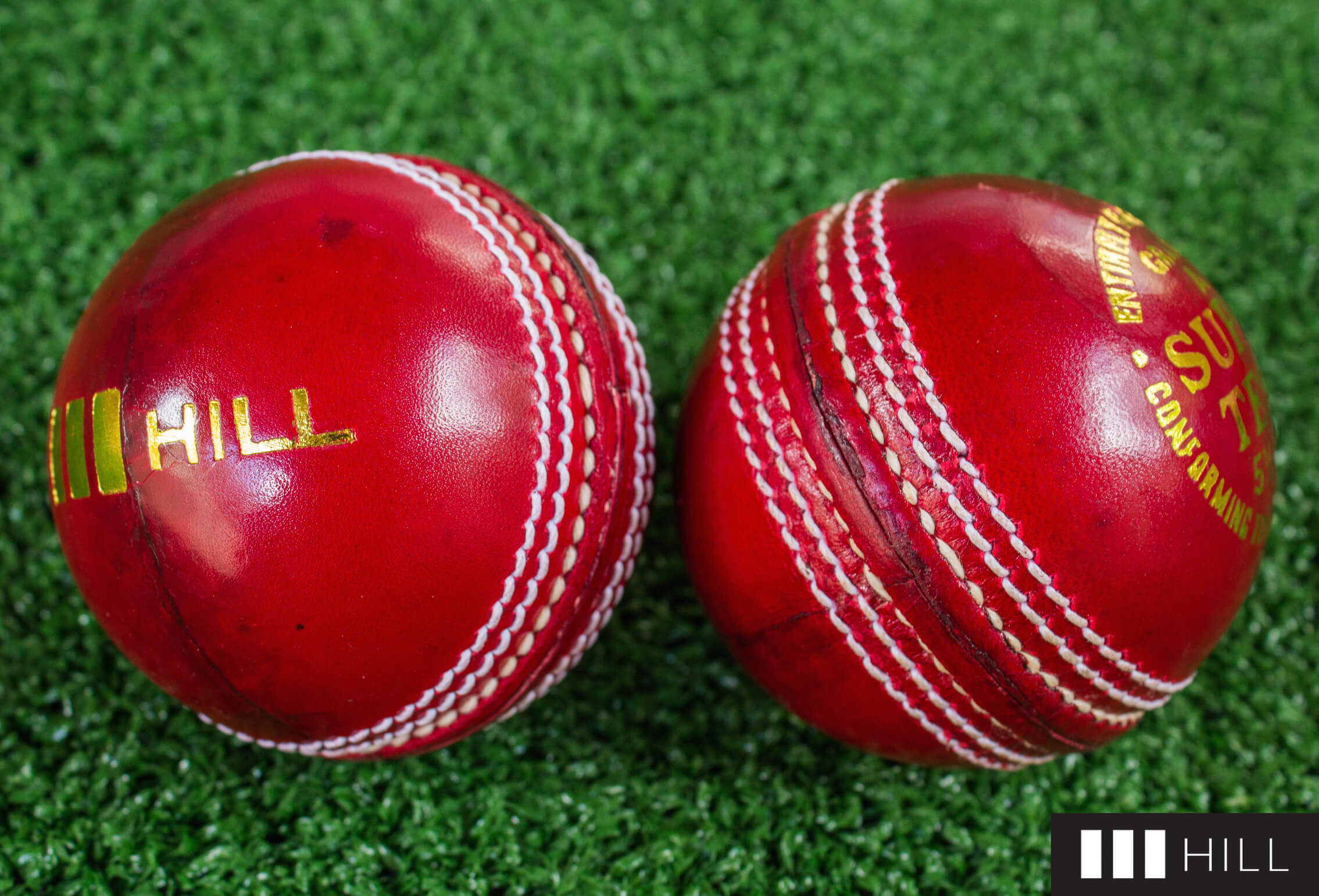
Hill Premium Quality Cricket Balls stay the distance. www.hillcricketballs.co.za
During his career, Richards totalled 28 358 runs at 54.74, with 80 centuries. In his only test series, the famous 4-0 whitewash of Australia in South Africa, he scored 508 runs at 72.57. His performances were highlighted by a remarkable stand with Graeme Pollock – in the second test in Durban, appropriately – during which he reached 94 by lunch before going on to make 140, while he and Pollock flayed the Australian attack to all corners of Kingsmead, putting on 103 in an hour.
In 1969, he was named one of Wisden’s Cricketers of the Year. In their article, Wisden notes: “Richards recognises his debt to Butler, to Wilf Isaacs, who is always ready and keen to help cricket and cricketers in South Africa, and to Leslie Theobald, his cricket master at Durban High School.”
“When Richards captained the South African Schools side in England in 1963, Mr. Theobald was manager, and their partnership produced outstanding results.”
The article concluded: “Richards’ horizons seem limitless, and it will be fascinating to see how far his talents will take him. Few, anywhere in the world, have his possibilities.”
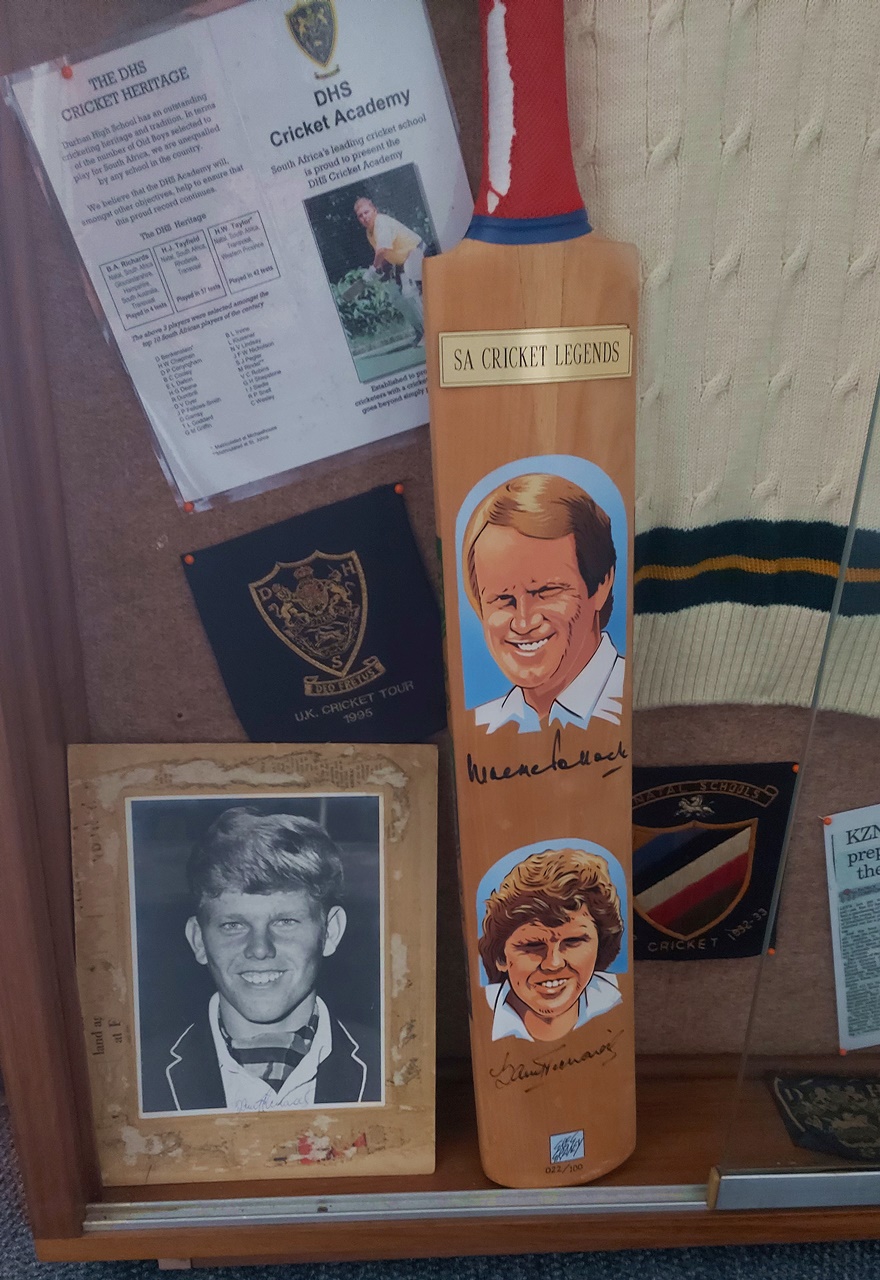
A photo of Barry Richards in his DHS honours’ blazer alongside a bat signed by Richards and Graeme Pollock.
Lee Irvine, a year older than Richards, also played just four tests in 1970 against Australia. Like Richards, he also excelled. He scored 353 runs at 50.42, including 102 in his final test innings on his 26th birthday.
He played 157 first class matches, for Natal, Essex and Transvaal, tallying 9 919 runs at 40.48, with 21 centuries. It should be mentioned that in those days pitches were tailored to a more equal battle between bat and ball. Nowadays the balance has tilted in favour of batsmen with television’s focus on providing entertainment. Thus, an average of 40, which is very good, would, arguably, have been closer to 50 in today’s conditions.
Ali Bacher, the captain of the 1970 Springboks, once called Irvine the most under-rated batsman in South Africa. “He seemed always to live in the shadows of Barry Richards and Graeme Pollock. What I saw of him during the five-year period we played together, he was certainly in their league,” he said in a newspaper report in The Citizen in 2014.
Interestingly, Irvine and Richards played together for two years at DHS – Richards was a year younger – and Irvine, in his matric year, performed better than Richards managed in any of his three years in the 1st XI, scoring 1 310 runs at an average of 68.95.

Check out the Cell C personal and business contracts at https://www.cellc.co.za/cellc/contracts
“There was no question he was a world class batsman. He was light on his feet, had terrific footwork and he was a beautiful timer of the ball, very similar to AB de Villiers,” Bacher said.
Leading cricket commentator Mark Nicholas compared Irvine, a wicket-keeper, to Australian Adam Gilchrist, high praise indeed.
After his playing days were over, Irvine became a familiar voice to radio listeners and television viewers of cricket.
As if two world class talents were not enough in the centenary match of 1966, there was a third: off-spin bowler Hugh Tayfield. For many years, he was South Africa’s leading test wicket-taker and in 1956 he was named one of Wisden’s Cricketers of the Year.

DHS old boys: Jon “Pom Pom” Fellows-Smith, Geoff Griffin, Colin Wesley, Trevor Goddard and Hugh Tayfield. all members of the South African national team that toured England in 1960.
In an article about his selection, the publication wrote: “In the seventeen Tests played by South Africa from 1952 to the end of the 1955 tour of England, J. E. Cheetham’s spin bowlers accounted for 109 batsmen. Of these, no fewer than 87 fell to the guileful, tenacious Tayfield, an average of four out of every five.”
It also recognised the development of Tayfield at DHS: “As a boy, Hugh bowled out of the back of his hand and though his batting and fielding were sufficient to keep him in the Durban High School XI his opportunities with the ball were limited. The turning-point in Tayfield’s career occurred when the school captain, also a leg-break bowler, suggested that Tayfield should try his hand at off-breaks.
“At his first attempt Hugh took two or three good wickets and promptly resolved to concentrate on his new-found art. Tayfield cannot recall being coached or modelling his technique on that of any other bowler, but he progressed so rapidly that soon after his seventeenth birthday he made his first-class debut for Natal. The following season, 1946-47, he helped Natal to win the revived Currie Cup competition and attracted special attention by taking six for 27 and six for 46 in friendly matches against Rhodesia and Transvaal respectively.”

When the match is tight and every run counts, you can count of Clox Scoreboards of KZN. http://clox.co.za/
The 13 for 165 he took against Australia in Melbourne in 1956 remains the third best test return ever by a South African bowler and he, alone, is the only South African to take 13 wickets in a test twice. His 9 for 113 in England’s second innings in Johannesburg in 1957 is the best return in an innings by a South African, and it also saw the Springboks to a narrow 17-run victory.
Tayfield’s test career spanned 11 years – from 1949 to 1960 – and 37 test matches (South Africa played only England, Australia and New Zealand in those days), during which he took 170 wickets. His obituary in Wisden in 1994 noted that he took more wickets per test than Jim Laker (he of the famous 19 for 90 against Australia in 1956) and more, too, than the great West Indian, Lance Gibbs.
Tayfield also holds the test record of sending down 137 balls without conceding a run against England in Durban in 1957.
He played in 187 first class matches, capturing 864 wickets at just 21.86 per wicket. His test economy rate was just 1.94 runs per over and his first class economy rate of 2.06 was very slightly higher.
He also scored 862 runs in tests and 3 668 in first class cricket, with a best of 75 in tests and 77 in first class games.
To this day, Hugh Tayfield remains, comfortably, the leading test wicket-taker all-time among South African spinners.

Trevor Goddard, a left-handed all-rounder, was also part of the legendary Springbok side of 1970. But he enjoyed a much longer test career, having played for South Africa for the first time in 1955.
He played 41 test matches, scoring 2 516 runs at an average of 34.46. A century, though, eluded him until his 62nd innings, when he scored 112 in the second innings of the fourth test against England in Johannesburg in 1965, having made 60 before being run out in the first.
Goddard also captured 123 wickets at 26.22. He gave little away with the ball and his economy rate of just 1.64 runs per over is the best in test history for bowlers taking 30 or more wickets.
He is also part of a small, select group of players who have opened both the batting and bowling in the same test for their country. Interestingly, one of the other South Africans to have achieved the feat was Herbie Taylor, who did it twice in 1914 against England. Taylor also attended DHS and, like Barry Richards and Hugh Tayfield, was named one of Wisden’s Cricketers of the Year, with his recognition coming in 1925.
According to Sir Donald Bradman, Goddard was “a very fine cricketer”.
Goddard played 179 first class matches, scoring 11 289 at 40.60, including 26 centuries, and took 534 wickets at 21.65.
Geoff Griffin is an interesting name among these great DHS old boys and cricketers. He played only two test matches, but he achieved a first by a South African, which can never be taken away from him
In the second test of South Africa’s tour of England in 1960, Griffin claimed a hat-trick, removing MJK Smith, Peter Walker and Fred Trueman. Not only does his hat-trick remain the only instance of a South African taking a test hat-trick, it is also the only instance of it occurring at Lords, the home of cricket.
Unfortunately, he was also no-balled in that test on a number of occasions for throwing. His throwing issues stemmed from an accident when he was in school which left him unable to fully straighten his arm. The no ball calls led to Griffin, remarkably, claiming a hat-trick in his second and last test.
Sadly the throwing problem was never resolved and Geoff Griffin’s first class career came to an end at the age of only 23. He captured 108 wickets at 21.61 and scored 895 runs at 17.90.
It is a credit to Griffin’s character that when a lawyer offered to represent him in court on the subject of his action, Griffin, as reported by Cricinfo in his obituary, declined as he did not wish “to sully the great game further”.
A remarkably talented all-round sportsman, he won Natal schools’ titles in long jump, high jump, triple jump and the pole vault. He also played hockey for Rhodesia.

Pivotal Talent’s Online SubjectChoice (Grade 9s) and CareerGuide (Grade 10s, 11s and 12s) solutions replaces uncertainty with accuracy in directing your children to make full use of their potential. Check out www.careerguidesolution.co.za
Wicketkeeper Dennis Gamsy was another member of the 1970 South African team, who played in the first two tests before making way for the experienced Denis Lindsay, the hero of the 1966/67 series against Australia.
Easily recognised by his distinctive glasses, Gamsy also played 93 first class matches for Natal, scoring 3 106 runs at 23.70, with a batting best of 137. He took 278 catches and effected 33 stumpings.
Richard Dumbrill also donned the green cap of the Springboks, playing in five tests in the mid-sixties. In fact, his last test, against Australia, started on 31 December 1966 at Newlands, therefore in the centenary of DHS.
His first test, a draw against England at Lords in July 1965, was his most successful. He took 3 for 31 in 24 overs in England’s first innings and followed up with 4 for 30 in 18 overs in the second to finish with match figures of 7 for 61.
Dumbrill’s first class career lasted 51 matches. In that time he tallied 1 761 runs at 23.48 and claimed 132 wickets at 22.03, with a best return of 5 for 34.

A sticky wicket makes for messy backyard cricket. Take action before it’s too late. www.midlandssepticservices.co.za
Colin “Tich” Wesley was selected for three tests during South Africa’s 1960 tour of England. Like Dumbrill, he played just 51 first class games. He scored 1 892 runs at 27.02, including three centuries, with a high score of 131.
A part-time bowler, Wesley picked up 15 wickets at a healthy average of 23.60, conceding 2.31 runs per over.
The remaining three players in the photo all played provincial cricket. Grayson Heath turned out in 46 first class matches, scoring 2 029 runs at 31.21, with a top score of 159 not out. He also claimed 36 wickets at 29.08.
Importantly, he also oversaw the merger of DHS Old Boys and the Pirates Kismet Cricket Club at a time when the DHSOB club, previously home to a long list of top cricket stars, went through a downswing. Today, that club is the DHS Rhythm Cricket Club.
Peter Dodds turned out for both Natal and Transvaal. A slow left-armer, he took 120 wickets in 39 first class games at 29.07, including a best of 7 for 51.
Jack Kaplan, a right-hand batsman and wicketkeeper, played in eight first class matches between the 1948/49 and 1951/52 seasons. He batted only 11 times, recording a high score of 62. He also bagged 15 catches and a remarkably high eight stumpings.

When it comes to a great getaway look no further than the five star Fordoun Hotel Spa and Restaurant in the leafy peace and quiet of Nottingham Road. Use Fordoun as your base to explore the delights of the KZN midlands. Go to https://www.fordoun.com/
About the centenary match, which was played at the DHS Old Boys’ Club: It was a two-day, two-innings, contest between the DHSOB XI and a Natal XI.
The Rest of Natal XI featured four Springboks: captain Jackie McGlew, Peter Carlstein, Mike Proctor and Pat Trimborn. It also featured another two DHS old boys, namely Charles Sullivan and Peter Marais.
In the game, Richard Dumbrill struck 114 and shared a partnership of 127 with Lee Irvine in the DHSOB XI’s first innings, but they found themselves trailing by 64 runs. The Old Boys were subsequently set a target of 188 runs to win in two-and-a-half hours and managed it in just an hour and 47 minutes for the loss of seven wickets to claim a three-wicket victory.
To this day, no school has produced as many South African test cricketers as Durban High School.
DHS come up just short as Northwood take tight victory
https://kzn10.com/dhs-come-up-just-short-as-northwood-take-tight-victory/
Captain Matkovich guides Westville to win at DHS
https://kzn10.com/captain-matkovich-guides-westville-to-win-at-dhs/

Hilton down Glenwood in the Durban heat
The Glenwood and Hilton College 1st hockey teams engaged in an entertaining clash in very hot conditions on the Three Schools’ Trust Turf in Durban on Saturday, reports KZN10.com’s Brad Morgan.
(Due to a lack of numbers to go with the players’ names from one side and numbers that did not align with the players from the other on the team sheets, I am unable to identify the players by name, which is unfortunate.)
The sides started out rather cautiously, with both employing a half-court press. Hilton, though, sent their attackers a little higher and wider up the field, which allowed them to stretch the Glenwood defenders out enough to create slightly more space. This also allowed them to enjoy the majority of the possession in the first half.
Hockey 2019: Hilton vs Michaelhouse derby
https://kzn10.com/michaelhouse-hilton-hockey-derby-promises-much/
Hockey 2019: Clifton vs Hilton match report
https://kzn10.com/clifton-college-vs-hilton-college-hockey-match-report/
Hockey 2019: Hilton vs Westville match report
https://kzn10.com/kzn-school-hockey-match-report-hilton-college-vs-westville/

Check out the Cell C personal and business contracts at https://www.cellc.co.za/cellc/contracts
Midfield was a battleground, with both sides doing a good job of closing down the receivers in that area of the field. Both coaches would surely have liked to see a quicker transition of the ball when it reached the middle of the park, but Hilton did manage to muster some opportunities while keeping Glenwood pinned in their half.

In the early going, matters were very tight in the midfield, with both sides putting the other’s ball-carriers under heavy pressure. (All photos: Brad Morgan, KZN10.com)
It took a while, but Hilton, on the balance of play, took a deserved lead, thanks to a swift counter after what until that point was a rare Glenwood attack. They exited from their 16 quickly and let the ball go to the right wing, who, given plenty of open field in which to attack, ran hard at the scrambling Glenwood defence.
Cleverly, as he cut in near the circle, instead of trying to dribble the covering defender, he simply flipped the ball past him, pinned his ears back and chased it. Another Glenwood defender was flying across towards the near-side post, but the Hilton man got there first, diving to knock a square ball across to the striker, who managed to get stick to ball a fraction of a second before the Glenwood ‘keeper, who had laid out to try to reach it.
The ball flew high and sweetly into the back of the net and Hilton were in the lead.

Hilton College score the opening goal as their striker knocks the ball past a despairing dive from the Glenwood goalkeeper.
While it was mostly about Hilton in the opening stanza, Glenwood showed flashes up front on the counter-attack, causing a problem or two for the Hilton defence, which was, for the most part, solid.
The match opened up after the break. Interestingly, Hilton had changed their defensive approach and were pressuring Glenwood higher up the field, which meant the game was no longer as compact as it had been and thus there was more space to work in.

Attention to detail separates the best from the rest. Talk to the experts. http://www.hilliarandgray.co.za/contact/
It was similar, though, in the fact that Hilton were enjoying the majority of the ball possession.
But Glenwood then made good use of the more open play. They launched a quick counter down the left wing after turning over possession and were duly rewarded when they found a foot in the Hilton circle.
The home team’s industry at last paid off when they scored off of a drag flick that had some serious heat behind it, making the score 1-1.

Glenwood showed no shortage of skill in the midfield, but a well-organised Hilton team, for the most part, kept them at bay.
They barely had time to celebrate that goal, however, as Hilton hit back quickly. They attacked down the right flank, this time carrying the ball along the baseline, which drew the goalkeeper to cover his post. When the ball was slipped back, the goalie was beaten and the Hilton striker had a tap-in for the second goal of the game.

Goal number two for Hilton was a simple tap-in after a sharp attack down the Glenwood baseline opened up the chance for the striker to grab a brace.

The third goal, which truly broke the contest open, came from a penalty corner awarded to Hilton.
At previous penalty corners, they had come close to adding to their tally off of a couple of variations, but all it took in the end was a straight shot. Rob Haynes let rip and the Glenwood goalie was unable to get his gloves together in time, just to his right, to stop the ball from crossing the line.
Glenwood threw themselves onto the attack as time wound down, asking questions of the Hilton backline, but the boys from the Midlands had the answers they needed and came away with a hard-fought 3-1 win.


